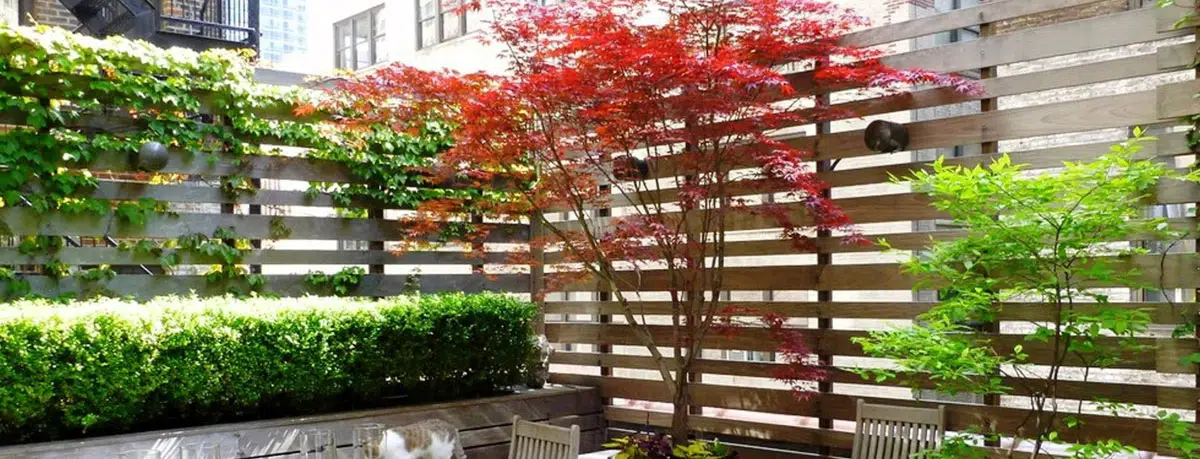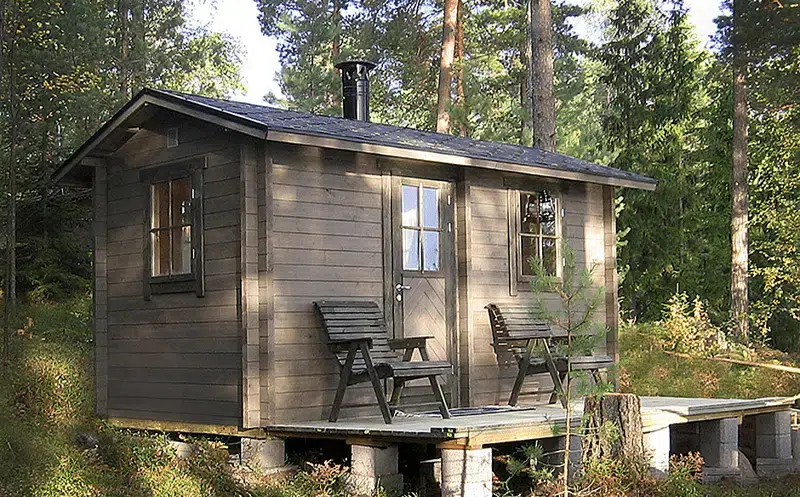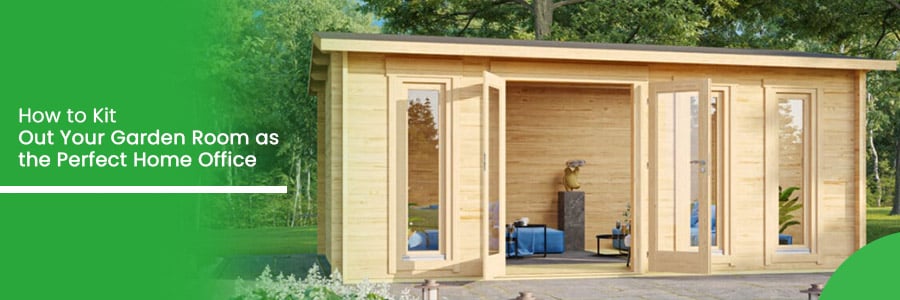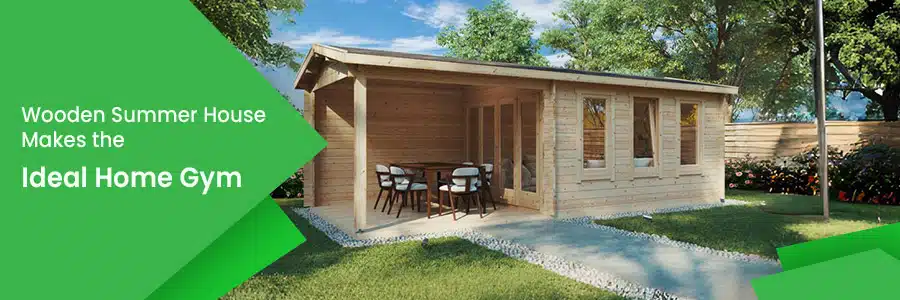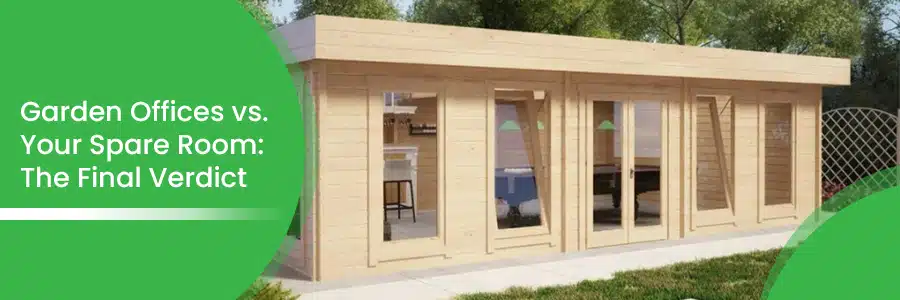Log Cabin Gardening – Climbing Plants as Design Elements
03.05.2018
If you use your inhabitable log cabin as a holiday cottage for hot tub holidays on the weekends, as a guest room in the garden, or you use your log cabin to live in it yourself: After the log cabin made it through the long winter, we spend more time in the gardens and get a good look at our log cabins from the outside. While walking through the garden, we admire the beauty of all kinds of flowers, and we should take the opportunity to also inspect the log cabin thoroughly to see if it needs any maintenance.
The timber should be well maintained without any wet spots or growth of fungi, moss, algae or lichen. If you find any of these, that means that the timber has taken up too much water, and you might mark the spot for wood treatment as soon as a longer dry and sunny period will have dried up the wood completely. The immediate surroundings of the log cabin should be cleared of foliage and debris so that the underfloor ventilation stays functional. Also, the drainage system should be free and unclogged. Bushes and trees growing close to the log cabin should be cut back so that they have some clearance to grow new leaves and sprouts without touching the outer walls which should also be free for ventilation.
You might also check the gutters and clear them if necessary.
With inspection and maintenance of our log cabin out of the way, the garden is back in our focus of attention, and we want to take the opportunity in the following article to shed some light on how climbing plants can be used as design elements in the garden
How can the log cabin garden profit from climbing plants?
Having the log cabin itself overgrown with climbing plants might not be the best idea if you intend to keep your log cabin very well conserved and inherit it to your children and grandchildren. Conservation of the natural building material timber is mainly achieved through dry conservation. Wood soaked with water will go the way of all dead organic material: Back into nature and serve as fertile compost for the next generation of plants, while wood, as well as herbs that are kept strictly dry at values below 20% water content just don’t have enough water in them for any decomposing organisms to survive and will theoretically keep their strength for many centuries. In fact in northern Europe there are churches built from timber with more than a 1000 years of age as well as there are wooden temples in Asia that reach this age.
For our log cabins, that means that in our humid climate, it should be our main concern to keep the timber dry and this is done with wood preservatives especially on the weather side or on the north walls of the log cabin and by maintaining a well functioning ventilation. Getting completely wet is not that big a problem for a wooden log cabin wall if and only if a good ventilation helps it to get dry as soon as the sun is out again.
Use a climbing scaffold for direct coverage of walls at the log cabin
Of course a flowering clematis covering the south side of the log cabin, maybe with the window or an opening for the door cut into it would look beautiful and very romantic. And it would even make sense to plant a climber there that has no leaves during the wintertime to let the sun shine through onto the walls and into the window while the leaves would shade the walls from too much heat and UV-radiation during the summer. Other than Clematis, you could also plant Virginia creeper or wisteria. If you like to get some fruits as well from them you might think of blackberries or even kiwis.
However, we would strongly recommend using a stable climbing scaffold for these plants, that can all grow very big and get quite heavy. The scaffold can be parallel to the wall of the log cabin, but it should be far away from it enough to ensure that a good outside ventilation of the wall is provided and no leaves or other parts of the plant directly touch the wall. Usually a distance of 30cm should be sufficient for that.
What functions can climbing plants serve in the garden at the log cabin?
Covering the log cabin itself is one thing, but how can you use climbing plants in the garden? As a matter of fact, there is hardly any other group of plants that is equally able to shape a garden. You can use them to separate different spaces, like for example a ornamental garden from a vegetable garden, you can use them to hide a garden swing behind a climbing frame or shield a gazebo from curious onlookers. You could hide an old ugly stonewall under a beautiful blanket of passion flower, or cover a large, naked concrete firewall next to your log cabin in ivy, even if it is a north facade with no sunshine at all. A wire fence might look much nicer with a curtain of beautifully flowering lonicera growing over it.
Using construction steel, you can form tunnels over paths leading from the garden to your log cabin that can be overgrown with jasmin that will not only provide a beautiful sight, but also fill the garden with its exquisite scent.
Pergolas can be overgrown with climbing roses or even wine, kiwis, or edible passionfruits to give you not only shelter from the sun, but also fruits to pick and enjoy in fall.
Climbing plant will provide shade, oxygen-rich air, moisture and beautiful views. Of course also other plants with fruits that are mostly found in vegetable gardens like tomatoes, cucumbers, pumpkins, melons, raspberries and others provide the same benefits plus some delicious organic food for salads, sweets or soups to be prepared in the kitchen at the log cabin, even if the ornamental species are mostly growing quicker, with more beautiful flowers and also get much larger. A wisteria for example might need regular cutting back each fall to not grow over everything.
The ornamental gardener will, of course also know climbing varieties of roses or climbing hydrangeas that offer not only beautiful sights but also have very nice scents.
If you want to cover rather low walls like for example next to a walkway or lower walls supporting slopes, you could try winter creeper. This climbing plant does not grow very high and does not need to be cut back covering smaller areas, like for example high foundations under your log cabin.
For any questions, please contact us or call Oliver at 020 3807 0369!
Categories:
BlogWant to discuss over phone. Let us call back to you
If you need any additional info regarding any product, please fill in the below form and we will get back to you, usually the same or next working day.
Have any questions regarding some product?
If you need any additional info regarding any product, please send us your questions.
